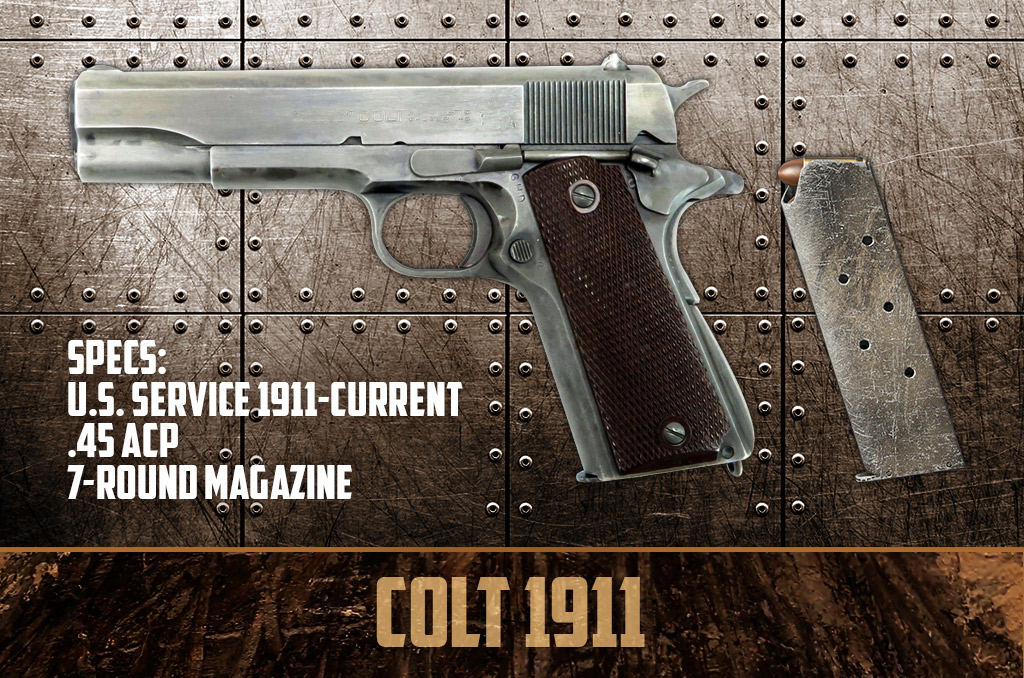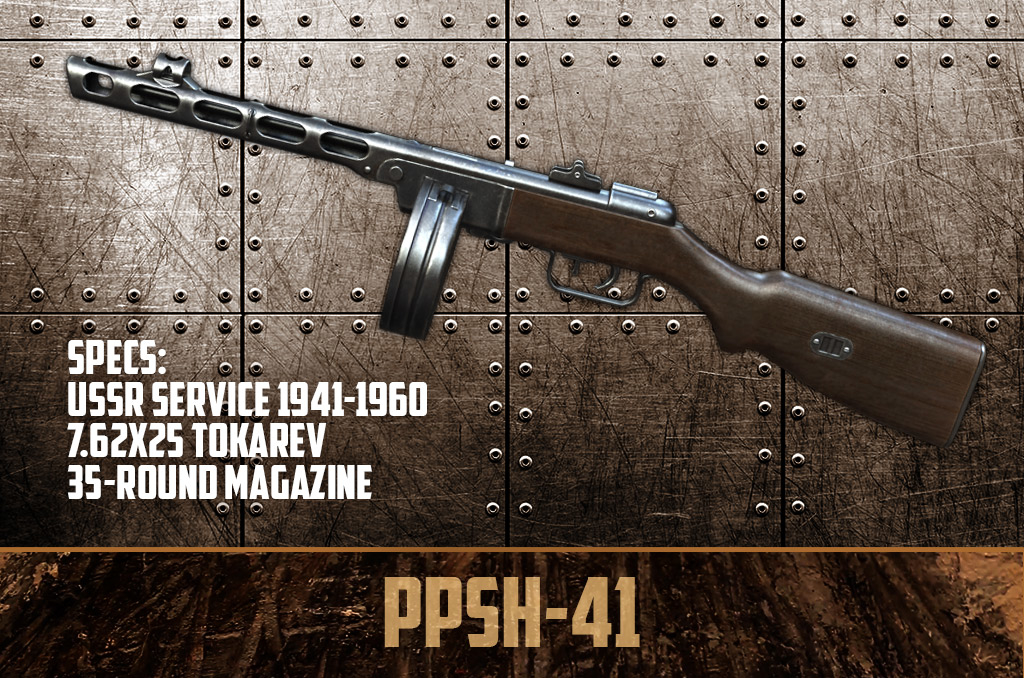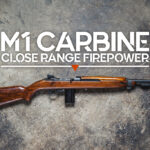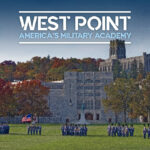
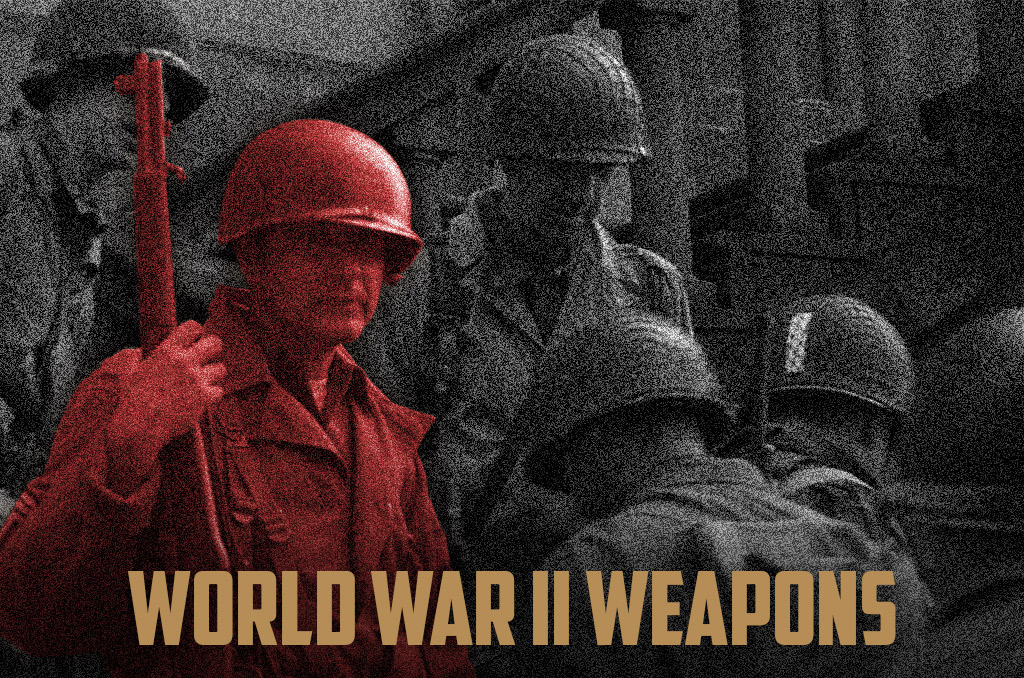
Rifles, Pistols, and Guns: A History of World War II Weapons
It was the deadliest war in the history of humanity. Nearly every country on the globe played some part in World War Two, and when it finally ended in 1945, an estimated 60 to 70 million people, including military and civilians, had lost their lives.
These staggering totals came about from millions of tons of dropped bombs. Some of which were incendiaries that set fire to large chunks of German and Japanese cities. Among those were the two atomic bombs that each vaporized a large metropolitan area of Nagasaki and Hiroshima. There was also artillery fired from land and sea, and all kinds of aircraft that strafed and destroyed railroads, convoys, and even fleeing civilians.
Much of the fighting was in close quarters, which resulted in an almost countless number of military casualties. The infantrymen on the ground clashed carrying their weapons and engaging in fierce skirmishes. These were the men who went from house-to-house and into caves to ferret out the enemy. This only occurred after the bombs and shells, dropped or fired from a distance, had failed to neutralize them.
While there were a variety of weapons that made an impact in the Second World War, here are five that are particularly noteworthy. The first up is the rifle that General George S. Patton called “the greatest battle implement ever devised.”
M1 Garand
Designed by John C. Garand, a Springfield Armory engineer, the M1 Garand was the first semi-automatic rifle issued to American fighting men. It was adopted by the U.S. Military in 1936 and chambered the same .30-06 cartridge as its predecessors, the M1917 Enfield and the 1903 Springfield.
The M1 fired eight rounds that were staggered in a clip. When the last round was fired, the clip automatically ejected, and the bolt locked to the rear, ready for another full clip. The rifle’s long-stroke piston is similar to the one found on the AK-47.
Because the German military was still carrying the bolt-action rifles of World War I, the M1 Garand gave the United States a distinct advantage during firefights. Its truly revolutionary design made the M1 invaluable throughout World War II and Korea. As many know, it even saw some service during the Vietnam War. Some friendly nations that the U.S. equipped were still using it into the 1980s.
Colt 1911
By 1926, the Springfield Armory had finished work on an updated model of the M1911 pistol, which had been the standard sidearm for Americans during World War One. The new and improved version became the Army’s standard sidearm throughout World War II and beyond. Between 1937 and 1945 over 19 million Colt 1911 pistols were produced by Colt, Ithaca, and Remington.
Officially named the Colt M1911A1 Handgun, it was a .45 caliber semi-automatic pistol with a seven-round magazine in the handgrip and a 5” long barrel. All that was needed to fire the Colt was to pull the trigger. The spent cartridge was ejected, and the next round was automatically placed in the chamber.
While the Colt 1911 was a reliable weapon with plenty of stopping power, it wasn’t perfect. Many complained that it was too heavy, and it did have significant recoil, but it stayed in service until 1985 when it was replaced by the M9 Beretta Double-Action.
Thompson Submachine Gun
Time magazine once called it “The deadliest weapon, pound for pound, ever devised by man.” That’s understandable since the Thompson submachine gun (a.k.a. the Tommy gun) could fire .45 caliber ammunition at a rate of 800 rounds-per-minute.
Designed by and named after the American John T. Thompson, his automatic weapon weighed a solid ten pounds. It came with either a circular magazine holding 50 or 100 rounds or a box magazine that could hold 20 or 30 rounds.
When war broke out in Europe, first the British, and later the Americans, saw the need for Tommy guns in close-range fighting. And by the spring of 1942, 100,000 Thompsons had arrived in Britain. They immediately became popular among Commando units who used them in raids on occupied Europe. When the United States entered the war, the Thompsons were used in both the European and Pacific Theaters.
Sturmgewehr 44
Nazi Germany’s Sturmgewehr 44 is credited as being the first assault rifle to be deployed on a large scale, first being used on the Eastern (Russian) Front in 1943 and on both fronts by the war’s end. Even though the StG44 was a semi-automatic weapon by default. It was also accurate in the full-automatic mode because of its slow rate of fire.
Using a 7.92mm x 33mm Kurz cartridge, the StG44 proved to be a versatile weapon with an effective range of 325 yards. It could also be used in place of light machine guns to provide covering fire.
Although it arrived on the battlefield too late to change the course of a war that had by then shifted in favor of the allies, the Sturmgewehr 44 spawned a whole class of infantry weapons. It would eventually include such well-known models as the AK-47 and the M16.
PPSh-41
The Red Army’s PPSh-41 was a lightweight submachine gun that saw considerable action on the Eastern Front during World War II. Although it was cheap and simple, the PPSh-41 proved to be an effective weapon. It eventually became one of the symbols of the Soviet victory over its Nazi invaders.
Firing 7.62mm ammo at 900 rounds per minute, the PPSh-41 was often equipped with a box or drum magazine. Anyone who has ever seen archival footage of the Russian Front has also seen Soviet soldiers carrying these weapons with their iconic circular magazines. But in reality, most of these guns had the traditional stick magazine.
More than 6 million of these submachine guns were manufactured during the war. They were finally retired from Soviet Army service shortly after the war ended.
How important were these weapons?
The United States, Britain, Germany, Japan, and the Soviet Union were the principal players in the drama that was World War II. There were many factors that contributed to the outcome of the war. The weapons mentioned above played their significant parts in each country.
Since the end of the war, experts on warfare have generally concluded that simply dropping bombs cannot win a war. It also requires the work of infantry units who carry these smaller weapons and use them skillfully. These five weapons played a substantial role in North Africa, Western and Eastern Europe, Russia, and the Pacific Islands. The war could not have been won without them or the brave combat troops who carried them.
Enjoy reading this history of weapons article? Take a look at our Weapons Of The Vietnam War article on the Widener’s blog.



